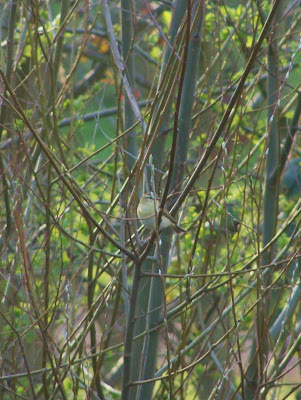Back up to the farm I saw the new scrapes are coming on well with Avocets already paying close attention and a pair of Oystercatcher looking comfortable too. All around, Lapwing peeled across the sky. It was great to feel that pulse of spring again, life humming from the depths of the grass up to the wispy clouds.
 |
| St Mary's Bay |
 |
| Willow Warbler (Phylloscopus trochilus) |
In the evening I walked up through Great Chattenden Wood, not seeing a single other person. I walked the paths in quiet awe of the place, winding through the bright coppices of Hazel and Ash with the early green shoots of bluebells carpeting the woodland floor between them. I circled round, following the mesh fence that divides the wood but perversely keeps it safe. Or until now at least. This is the old Lodge Hill MOD compound, or a small part of it. Once it was home to soldiers, but in their absence it's now a haven for birds, invertebrates, mammals and plants. In recognition of this importance it was recently awarded SSSI status by Natural England, the government's environmental advisory department.
Along a ride, by one of the fences, a song rings out crystal clear in the evening stillness - a Nightingale, the headline act in this woodland cavalcade. It's depth of voice, its tonal quality, is to my experience, unrivalled in the bird world. In our world. And this place is where it comes to breed, over thousands of treacherous miles, to raise the next generation; this is its choice and will. But it is more symbolic than superior, with so many riches here. It's a nice moment and I should enjoy this evening and this place, but it's hard when you realise this could all disappear in an instant.
Chattenden Wood and Lodge Hill SSSI is threatened with a drastic new town development, one of the largest residential proposals in Europe, that will realistically alter this unique place forever. Keep an eye out and tell your friends and if you visit, don't forget to listen out.
 |
| Chattenden Wood SSSI, Kent, 20/4/13 |
 |
| Lodge Hill and Rough Shaw from Cooling Common |



















